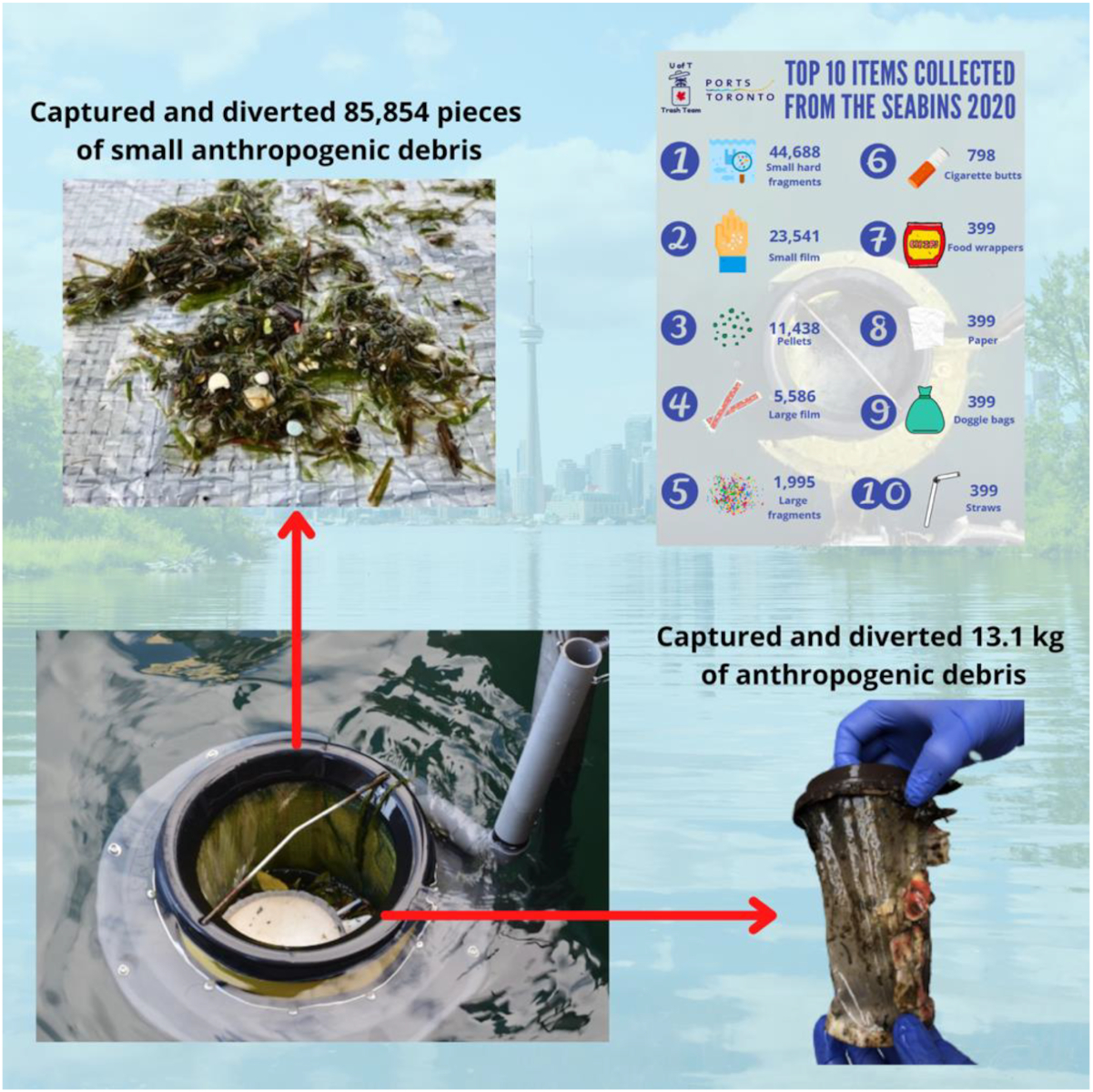Cassandra Sherlock, Rafaela F. Gutierrez, Michael David, and Chelsea M. Rochman (2023). “A methodology for quantifying and characterizing litter from trash capture devices (TCDs) to measure impact and inform upstream solutions.” FACETS. 8: 1-12. https://doi.org/10.1139/facets-2022-0034. [open access]
Abstract: Trash capture devices (TCDs) are a rapidly evolving tool for municipal governments, non-governmental organizations, and industries to divert litter from our waterways. Here, we introduce protocols to initiate trash trapping projects to quantify and characterize captured anthropogenic litter based on a case study using Seabins. In addition, we have introduced a network for global data collection via TCDs. Our first protocol is a visual audit of the potential site to inform the type and location for TCD deployment. Our next two protocols quantify and characterize the litter captured by TCDs: (1) a simple protocol intended for daily monitoring and (2) a detailed protocol to characterize and quantify all large debris (>3 cm) and a subset of the small debris (2 mm–3 cm) caught in the devices. Using Seabins in the Toronto Harbour to test our methodology, we found that our subsampling methodology has a 6.9% error rate. Over a 19-week period, the Seabins captured ∼85 000 pieces of small debris. Our study highlights the utility of TCDs and proposes methods to realize this utility globally. TCDs should become more widespread and utilized as a triple threat: a cleanup tool, a data collection tool, and a platform for outreach and education.
Graphical abstract

